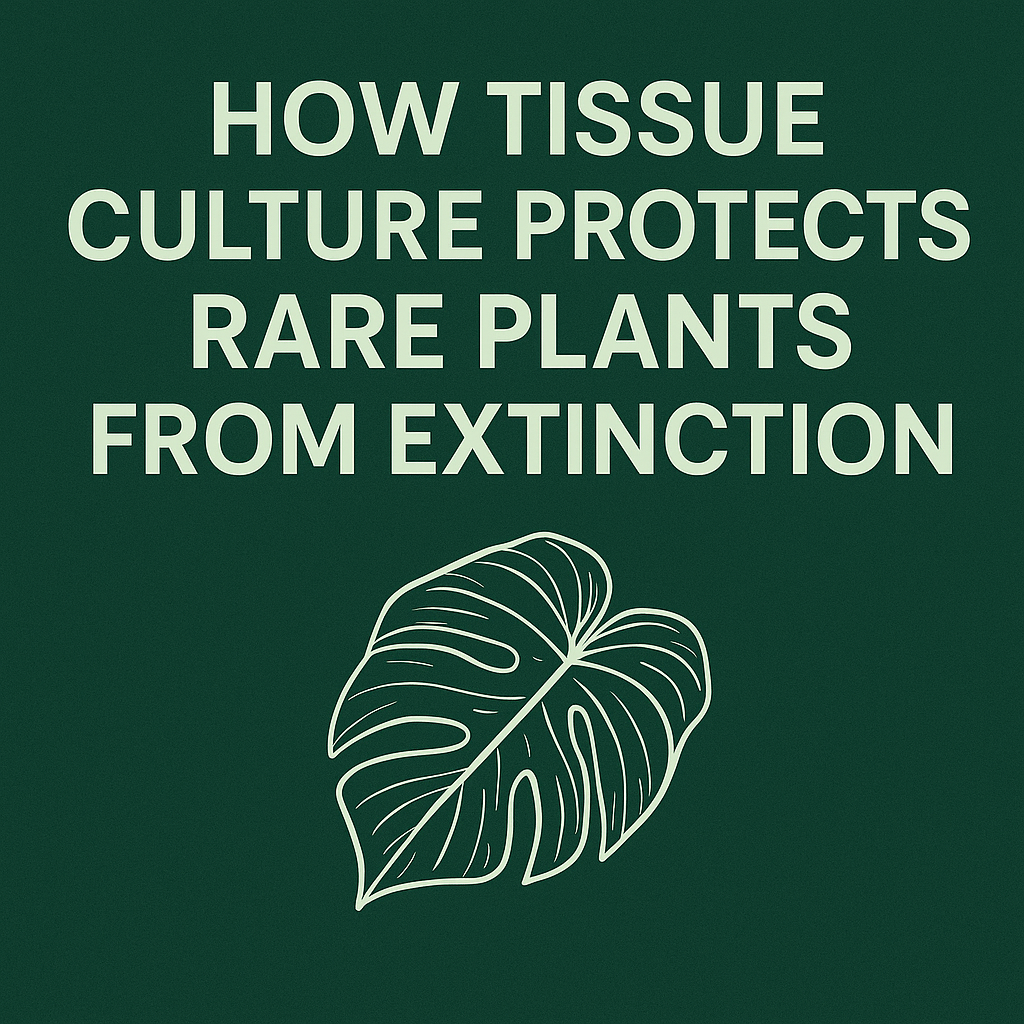
How Tissue Culture Protects Rare Plants from Extinction
Share
Rare tropical houseplants have become status symbols in homes and collections across the globe. But behind the beauty of variegated Monsteras and velvet Anthuriums lies a serious issue: many of these species are threatened in the wild. Habitat loss, deforestation, overharvesting, and climate change are pushing some plants closer to extinction.
Plant tissue culture offers a solution, not just for collectors, but for conservation.
🌍 The Threat to Rare Plants
Deforestation: Tropical rainforests, the native home of many aroids and orchids, are disappearing at alarming rates.
Over-collection: When a rare cultivar becomes trendy, wild populations are often stripped for profit.
Slow Natural Propagation: Many rare plants grow slowly or reproduce infrequently, making wild recovery difficult.
Without intervention, certain species risk disappearing completely from their natural habitats.
🌱 What Is Tissue Culture?
Tissue culture (micropropagation) is the process of growing plants in sterile, controlled environments from tiny pieces of tissue, such as a leaf, stem, or meristem. By using nutrient-rich media and plant hormones, labs can multiply plants rapidly without relying on seeds or cuttings.
🔬 How Tissue Culture Protects Plants
1. Mass Propagation Without Wild Harvesting
Instead of pulling plants from fragile ecosystems, labs can produce thousands of identical clones from a single donor plant. This drastically reduces the demand for poaching.
2. Preservation of Rare Genetics
Once a rare or endangered species is in culture, its genetic material can be stored and propagated indefinitely. Even if wild populations are wiped out, the species survives in vitro.
3. Disease-Free Plants
Tissue culture allows growers to “clean” plants by starting cultures from meristematic tissue, which is often free from viruses and pathogens. This helps reintroduce healthy specimens back into the wild.
4. Controlled Distribution
By producing plants in labs, rare species can be made available to collectors, researchers, and botanical gardens worldwide, reducing black-market pressure on wild habitats.
5. Restoration Projects
Conservation organizations are increasingly using tissue culture to replant endangered species in their native environments. This offers hope for long-term ecosystem recovery.
🌿 Real-World Examples
Orchids: Many endangered orchids are now propagated by tissue culture, preventing illegal collection.
Aroids: Rare Philodendron and Monstera cultivars are maintained through labs, ensuring stable populations.
Medicinal Plants: Species like Panax ginseng and Artemisia are mass-produced in labs to protect wild stocks.
💡 Why This Matters to Collectors
Every time you purchase a lab-propagated rare tropical, you’re not just adding beauty to your collection, you’re helping take pressure off wild ecosystems. Supporting tissue culture-grown plants is a vote for ethical collecting and conservation.
Final Thoughts
Tissue culture is more than a scientific technique, it’s a lifeline for plants on the brink of extinction. By combining innovation with conservation, we can protect biodiversity, share rare plants responsibly, and ensure future generations experience the beauty of these species.
